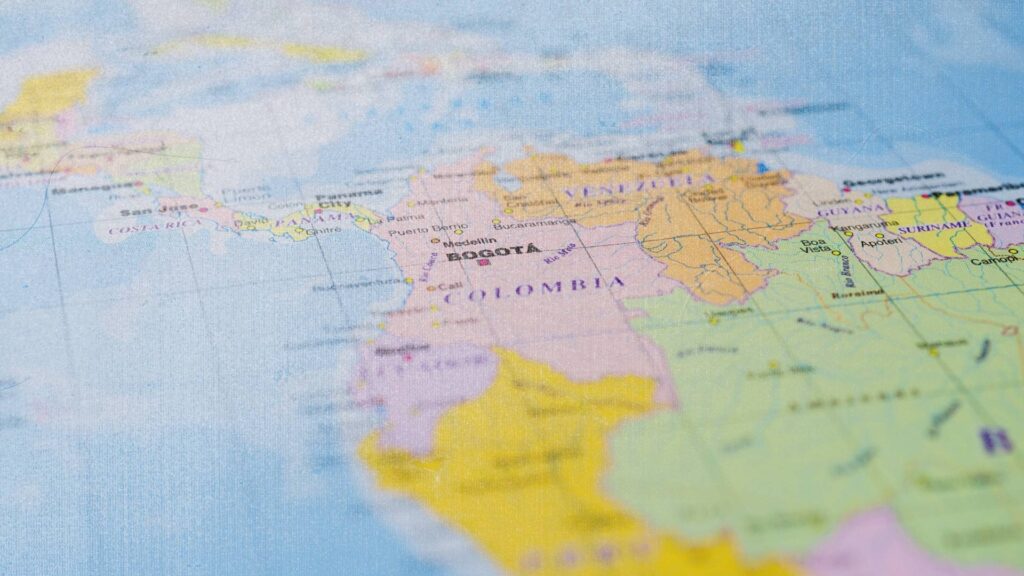Latin America was the last continent touched by the modern missions movement. It was not until the beginning of the twentieth century that evangelical missionaries began arriving there in significant numbers. Their numbers increased substantially following World War 2, reinforced by military veterans and energized by the vigorous Pentecostal movement.
Their efforts eventually sparked a spiritual awakening that swept the continent. By the 1980s, Latin Americans were coming to Jesus at the rate of 400 new converts every hour, according to investigative journalist David Martin.1

That date also roughly coincided with the beginning of the transition from Latin America as a missionary field to Latin America as a missionary force. Today the continent sends more cross-cultural workers outside its borders than it receives from overseas.
Today the continent sends more cross-cultural workers outside its borders than it receives from overseas.
The Doulos ship’s² four-and-a-half-year circumnavigation of South America in the late 1970s is the event that many leaders identify as a catalytic moment in the transition from mission field to mission force. The Doulos crew conducted evangelism campaigns and disciple training at ports of call. Young Latin Americans of that generation who responded to the challenge to carry the gospel to foreign countries became key leaders in the continent’s missionary movement.
Pablo Carrillo of Mexico was one such young person. While participating in university-student protests in 1968, he received a copy of the Gospel of John from a Campus Crusade worker. That encounter persuaded him to give his life to Christ. When his university closed for six months following the protests, Carrillo joined an Operation Mobilisation team to distribute gospel literature door-to-door in Mexico City.
By the time he graduated three years later, Carrillo’s professional plans had changed. For three months, he and a friend met at 5:00 every morning to pray through a map of the world, country by country. That exercise led him to accept an invitation from Operation Mobilisation to complete discipleship training and language study in Europe and the Middle East. Eventually Carrillo married, and he and his wife became tent-making missionaries in North Africa. Others soon followed in their footsteps.
A common characteristic of Latin Americans like Carrillo is their vision to reach the least reached
A common characteristic of Latin Americans like Carrillo is their vision to reach the least reached. Research shows that the vast majority of cross-cultural workers sent from traditionally Christian countries are not going to people groups that most need to hear the gospel, but instead to other Christian countries.
This trend must change radically if Christ’s followers are going to make disciples of all nations. In that regard, Latin Americans are trendsetters, according to Daniel Bianchi, Regional Director for the Lausanne Movement in Latin America. Bianchi explains that an attribute of the Latin American missions movement these last 40 years has been its focus on unreached groups. They have thought a lot about North Africa, the Muslim world, the Middle East and India. For example, some years ago the Missions Commission of the World Evangelical Alliance conducted a survey which revealed that Argentina was one of the countries with the highest number of workers sent to unreached groups.3
Bianchi reports several other challenges with which Latin American mission agencies wrestle nowadays. They include galvanizing the support of church clergy for the cross-cultural task, challenging the next generation to pursue the Great Commission vision, and engaging in deeper theological reflection on mission issues. The challenge is to not simply depend on excitement and enthusiasm, but to be prepared for what is coming. Bianchi also suggests that another opportunity that is coming is to collaborate much more with the church in Africa, Asia, and if possible, in China.
The challenge is to not simply depend on excitement and enthusiasm, but to be prepared for what is coming.
With around 40 thousand cross-cultural workers on the field, Latin America is thought to be the third largest missionary force in the world today, after North America and South Korea. If so, that represents a notable achievement for the last continent to be touched by the modern missionary movement.
Endnotes
- Martin, David. Tongues of Fire:The Explosion of Protestantism in Latin America. (Hoboken, NJ: Blackwell Publishers, 1990).
- OM’s Ship Ministry shares knowledge, help and hope in and around the world’s port cities. https://www.om.org/eng/ships/the-ships
- David Bianchi. Interview by Dave Miller. 21 September 2024

